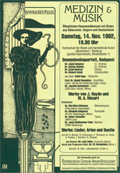The eLitMed.hu medical portal uses computer cookies for convenient operation. Detailed information can be found in the Cookie-policy.
Lege Artis Medicinae - 2008;18(12)
Content
[PREDICTORS OF RESPONSE TO TREATMENT IN CHRONIC VIRAL HEPATITIS]
[As the results of antiviral therapy for hepatitis B and C infections are still suboptimal, attention has been given to the strategies to maximize the effectiveness of currently available therapeutic modalities. In this approach, individualized management - based on predictive factors that influence response to treatment - is a key component. The paper summarizes how predictors can assist in optimizing therapy of patients with chronic viral hepatitis. In chronic hepatitis B, a favorable response to interferon or nucleoside/ nucleotide therapy can be expected in young, HBeAg-positive patients with alanine aminotransferase (ALT) values >2-5× upper limit of normal, histological activity >4-10, HBV DNA <105 copies/ml (<20,000 IU/ml), and infection with HBV genotype A or B. Virological response at 12 and 24 weeks (>1 log10 decrease in HBV DNA titer or a titer of <400 IU/ml) may assist in decisions about treatment continuation or switching to another therapeutic option. In chronic hepatitis C, before interferon/ribavirin treatment, non-modifiable predictors are age, sex, race, cirrhosis, HCV genotype and HCV RNA titer. HCV1 genotype is an important negative predictor. Modifiable factors are body mass index, insulin resistance, diabetes, depression and cytopenias, which can be corrected in order to improve the chance of therapeutic success. During treatment, rapid (week 4), early (week 12), or slow (week 24) virological response may determine the duration of treatment (24, 48, or 72 weeks), and predict the likelihood of sustained virological response. Most important positive predictor is rapid response at week 4, similarly complete early response (at week 12) is also of value concerning the duration of therapy and even in the aspect of re-treatment. Body weight-adapted ribavirin dosing and patient adherence are important factors of therapeutic success, as well.]
[CHRONIC PAIN SYNDROMES - MYOFASCIAL PAIN SYNDROME]
[In the first part of their review about chronic pain syndromes the authors summarize our knowledge about the etiopathogenesis, pathology, clinical features, diagnosis and treatment of myofascial pain syndromes. It is emphasized that also pain of the internal organs, as well as musculoskeletal and connective tissue diseases may generate myofascial pain syndromes. The correct diagnosis of these syndromes is very important, for they respond poorly to simple analgesics, steroids or non-steroid anti-inflammatory drugs. Exercise, physiotherapy, behavioral treatment, local injections, muscle relaxants, tricyclic antidepressants, serotonin reuptake inhibitors are successful modalities of treatment.]
[IMMUNOLOGICAL ASPECTS OF PREGNANCY FAILURES - NOVEL THERAPEUTIC APPROACHES]
[Recurrent miscarriage and failure of in vitro fertilization and embryo transfer affect millions of women annually. It is one of the great problems of the medical community that in as many as 75% of these failures their cause is never established. Considering that recurrent abortions may have several causes including anatomical, morphological, genetic, medical, bacteriological as well as immunological abnormalities it is inevitable to pursue these kinds of examinations and tests. One part of the immunological background can be explained by autoimmune diseases while the other part of it is associated with immunopathological factors. Currently available practical testing batteries that can directly assess immunological background, as well as their importance are covered. Recently developed and mainly immunology based treatments are also described. The results generally show that immunoglobulin products can be used safely in pregnancy. In the author's institute the efficacy of this therapy has been 93.5% in cases of immune-mediated abortion. As an alternative to intravenous immunoglobulin (IVIG) therapies, partner specific platelet suspension can be used only in selected cases with proven immunological background. Therapy monitoring, that is, assessment of the functional efficacy of IVIG is possible by determining FcR blocking antibodies in the maternal serum. Based upon the functional percentage of serum blocking activity the dosage and number of treatments can be changed.]
[ASTHMA THERAPY ACCORDING TO THE REVISED INTERNATIONAL RECOMMENDATION]
[A comprehensive workshop report entitled “A Global Strategy for Asthma Management and Prevention - Global Initiative for Asthma (GINA)” first published in 1995, has been widely adapted, translated and reproduced, and forms the basis for many national asthma guidelines. The 2006 report contains important new themes. It asserts that it is reasonable to expect that in most patients with asthma, control of the disease can be achieved and maintained, and recommends a change in approach to asthma management with asthma control, rather than asthma severity, being the focus of treatment decisions.]
[NON-ISCHEMIC MYOCARDIAL DISEASES]
[Myocardial diseases are leading morbidity and mortality statistics. There is a group of non-coronary myocardial diseases with heterogeneous background, the majority of them being fatal, or causing sudden cardiac death. Knowledge of genetic and molecular biology techniques has facilitated identification of etiology and pathogenesis of primary myocardiopathies, thus opening up new prospects of diagnostics and therapy. Secondary myocardiopathies are of known origin; they include myocarditides, systemic and endocrine myocardiopathies and myocardial alterations induced by medical drugs and narcotic drugs. WHO has issued a recommendation for grouping primary and secondary myocardial diseases on a pathological and morphological basis. A review of these diseases based on the WHO recommendation, the authors clinical experience, and literature data is given.]
[ROSIGLITAZONE IN THE HEAT OF THE DEBATE]
[The meta-analysis by Nissen and Wolski suggested a potential ischemic cardiac side effect of rosiglitazone. Studies in order to verify this suggestion finished until now had a short duration and a low frequency of harmful cardiac events that made them unable to decide this question. Nevertheless, several running studies will presumably have an adequate follow-up period of ten or more years and the desired frequency of observed cardiac events. Completion of these studies and publication of their results can be expected in the following two years. Until then, the European Medicines Agency’s standpoint of 18th October 2007 will be valid stating the benefits of rosiglitazone surpass its risks.]
[SECONDARY MALIGNANCIES IN RHEUMATOID ARTHRITIS]
[INTRODUCTION - Survival data for rheumatoid arthritis (RA) have improved during the past years. Due to longer life expectancy, more attention has to be paid to prevention and treatment of long-term sequelae, including secondary malignancies. Incidence of malignant lymphoproliferative diseases and bronchial cancer is higher in a number of rheumatic diseases including RA. Some drugs nowadays very rarely used in RA - primarily cyclophosphamide and azathioprine - may further increase cancer risk. According to several large meta-analyses, biological therapy may also increase the risk of lymphomas, however, as these agents are used for the treatment of active, refractory arthritis, benefit may override such risks. PATIENTS AND METHODS - Altogether 516 RA patients managed at our department were assessed for the incidence and type of secondary malignancies. Although the absolute number of RA patients with a tumor was relatively small, we compared our cohort to the Health for All database and calculated standard incidence ratios (SIR). RESULTS - We identified 13 cases of malignancy (11 females and 2 males) in 516 RA patients (2.5%). In two patients, cancer developed before the onset of RA. RA patients with malignancy had an even higher female predominance (5.5 to 1) than usual. Mean age at onset of RA was 51.4 years, while age at the diagnosis of malignancy was 61.8 years. Mean duration of RA at the time of cancer diagnosis was 11.2 years. Five patients died, 4 due to the underlying malignancy. In the fifth patient, the tumor was considered cured but the patient died of amyloidosis. Among the 8 surviving patients, mean survival is 7.3 years until now, while overall survival of all 13 cancer patients is 4.7 years. Regarding types of malignancies, there were 6 cases of bronchial cancer, 2 cases of follicular thyroid cancer, and one cutaneous B cell lymphoma, one breast cancer, one gall bladder cancer, one colorectal cancer, and one pancreatic cancer. In comparison to the Health for All database, the overall SIR of all malignancies in RA was 1.12 (CI 0,91-1,33), varying between 2.2 and 70.7 among different tumor types. Only one cancer patient received cyclophosphamide therapy and some received methotrexate or anti-TNF agents. CONCLUSION - We identified 13 cases of malignancy among our RA patients. In RA, secondary tumors including bronchial cancer and lymphomas are more common than in the general population. Adequate treatment and monitoring of these patients may help us to lower the risk of malignancies secondary to RA]
1.
Clinical Neuroscience
Is there any difference in mortality rates of atrial fibrillation detected before or after ischemic stroke?2.
Clinical Neuroscience
Factors influencing the level of stigma in Parkinson’s disease in western Turkey3.
Clinical Neuroscience
Neuropathic pain and mood disorders in earthquake survivors with peripheral nerve injuries4.
Journal of Nursing Theory and Practice
[Correlations of Sarcopenia, Frailty, Falls and Social Isolation – A Literature Review in the Light of Swedish Statistics]5.
Clinical Neuroscience
[Comparison of pain intensity measurements among patients with low-back pain]1.
Clinical Neuroscience Proceedings
[A Magyar Stroke Társaság XVIII. Kongresszusa és a Magyar Neuroszonológiai Társaság XV. Konferenciája. Absztraktfüzet]2.
3.
Journal of Nursing Theory and Practice
[A selection of the entries submitted to the literary contest "Honorable mission: the joys and challenges of our profession" ]4.
Journal of Nursing Theory and Practice
[End of Life and Palliative Care of Newborns in the Nursing Context]5.
Journal of Nursing Theory and Practice
[Aspects of Occupational Health Nursing for Incurable Patients ]

















